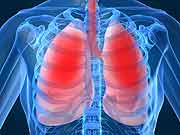
THURSDAY, Feb. 28 (HealthDay News) — Ultrasound can detect fluid in the lungs of dialysis patients, possibly preventing what could turn into fatal heart problems, Italian researchers report.
Many patients undergoing dialysis for kidney failure also suffer from heart failure and are at danger of having too much fluid in their lungs, which can lead to a heart attack, other heart problems and even death, the researchers said.
“Fluid overload is a leading risk factor for death and [heart problems] in end-stage [kidney] disease patients on chronic dialysis, particularly in those with heart failure, which represents a substantial fraction of this population,” said lead researcher Dr. Carmine Zoccali, director of the nephrology, hypertension and renal transplantation unit at Riuniti Hospital in Reggio Calabria.
Early identification of lung congestion may help prevent progression of heart failure, serious cardiovascular problems and death in dialysis patients, he said.
Zoccali noted that ultrasound is commonly used to visualize heart problems and is widely available and relatively inexpensive.
In the study, which was published online Feb. 28 in the Journal of the American Society of Nephrology, Zoccali’s team measured the amount of lung congestion in nearly 400 dialysis patients using ultrasound. They found that 14 percent of the patients had severe lung congestion and 45 percent had moderate-to-severe congestion.
Yet 71 percent of those with moderate-to-severe lung congestion showed no symptoms of it, the researchers found.
Over two years of follow-up, dialysis patients with severe congestion had a 4.2-fold increased risk of dying and a 3.2-fold increased risk of having a heart attack or other heart problems, compared to patients with mild or no lung congestion.
Fluid in the lungs is one of the hallmarks of heart failure, said Dr. Stephen Green, associate chairman of the department of cardiology at North Shore University Hospital in Manhasset, N.Y. Fluid builds up because the heart isn’t strong enough to pump blood efficiently. As the lungs fill with fluid, it becomes more difficult to breath, Green said.
In the study, fluid in the lungs was a better predictor of the risk of dying or having a heart attack than were other symptoms of heart failure.
Green called the study “interesting” but noted the small number of participants.
He said the results “suggest that use of lung ultrasound to assess early signs of fluid retention in and around lung tissue in patients with kidney failure on dialysis might help predict those patients at higher general risk of heart failure or heart attack symptoms — namely shortness of breath and body fluid overload.”
Those patients being treated for heart and kidney failure might soon have another test to help assess which patients not currently having symptoms might be on the cusp of developing lung congestion and worsening cardiac disease, he said.
“It’s in this group of high-risk kidney and heart patients we could then intensify treatment and hopefully avert a problem before it develops,” Green said.
More information
To learn more about dialysis, visit the U.S. National Library of Medicine.

